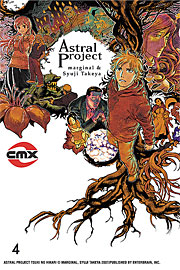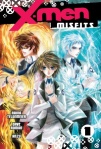 It’s impossible to capture the scale and scope of a disaster like Hurricane Katrina, and a smart creator wouldn’t even try. Josh Neufeld is a smart creator, and he’s a talented one, and I like the approach he takes to A.D. New Orleans After the Deluge (Random House). Instead of trying to capture everything, he focuses on the experiences of a handful people who lived through the storm and are muddling through its aftermath.
It’s impossible to capture the scale and scope of a disaster like Hurricane Katrina, and a smart creator wouldn’t even try. Josh Neufeld is a smart creator, and he’s a talented one, and I like the approach he takes to A.D. New Orleans After the Deluge (Random House). Instead of trying to capture everything, he focuses on the experiences of a handful people who lived through the storm and are muddling through its aftermath.
His subjects offer a socioeconomic mix, from upper to working class. Some of them stayed in New Orleans through the storm, and others watched it unfold from a distance. Again, I don’t think Neufeld is doing this to try and tell “the whole story” so much as to offer different vantage points on what the city and its residents endured.
There’s Denise, who has no means of evacuating, and she ends up at the convention center, waiting for help that seems unlikely ever to come. Abbas sticks around to protect his family’s convenience store. Twenty-something Leo and his girlfriend, Michelle, evacuate, as does young Kwame with his family. A doctor stays put, confident in the sturdiness of his historic home.
Neufeld refrains from imposing a narrative on these survivors, instead illustrating their individual stories and interspersing them as they chronologically unfolded. Their testimonies are all vivid and engrossing, and Neufeld renders them with detail and restraint. There’s terror, anger, and sadness, but there’s also perseverance and hope.
It’s a durable and valuable work, and Neufeld’s illustrations hold up to the content. Like Rick Geary of the Treasury of Victorian Murder series of books, Neufeld doesn’t illustrate for photo-realism. His style is still evident, though he’s scrupulous in rendering people and settings.
I remember text pieces in this vein from my newspaper days, when a sensible reporter would get out of the way and let people tell their stories. (As Neufeld is illustrating these stories instead of merely transcribing them, there’s obviously a higher degree of difficulty.) There seem to be fewer of those kinds of meaty, personal portraits that flesh out major events. I miss them, and I’m glad to see Neufeld translate some of that same journalistic spirit into comics form.
(This review is based on a black-and-white “advanced reader’s edition” provided by the publisher. It’s one of those books with a really interesting provenance, so I encourage you to go read Tom Spurgeon’s interview with Neufeld to find out more. I nominated this book for the Young Adult Library Services Association’s Great Graphic Novels for Teens list. Anyone can nominate a title, assuming they aren’t one of the book’s creators and/or don’t work for the publisher of the book being nominated. Creators and publishers can certainly nominate the work of others.)
 Before I delve into
Before I delve into  Del Rey continues with the manga-fication of Marvel’s mutant franchise with
Del Rey continues with the manga-fication of Marvel’s mutant franchise with 
Upcoming 10/7/2009
This week’s ComicList has some welcome, off-the-beaten-path items, so let’s dig in.
The arrival of one book from Fanfare/Ponent Mon is a welcome delight. The arrival of two seems positively decadent, but that’s what they do, and both are from master illustrator Jiro Taniguchi. Which excites you more will depend on your taste for Taniguchi. Summit of the Gods, about fateful trips up Mt. Everest, is in his man-versus-nature vein, like The Ice Wanderer and Quest for the Missing Girl. A Distant Neighborhood is more slice-of-life, kind of like his story in Japan as Viewed by 17 Creators or The Walking Man (if it had a plot). I picked up the first two volumes of A Distant Neighborhood at Small Press Expo and can heartily recommend it. I’ll cover it in more depth later, but it’s about a middle-aged man who wakes up as his teen-aged self shortly before his father’s disappearance.
I’ve already written about The Zombie Survival Guide: Recorded Attacks (Random House), mostly for its weird crediting of author Max Books and illustrator Ibraim Roberson on the review copy I received and the web listing, some of which seems to have been fixed. Brooks inserts zombies into various, far-flung scenarios – the colonial Caribbean, a Foreign Legion outpost in northern Africa, even pre-history – offering a faux-anthropological examination of zombie encounters through history. Again, it’s clever, and Roberson draws the heck out of it. I’d recommend it for zombie fans looking for a marginally fresh take on the (in my opinion) exhausted topic.
I tend to like the shôjo titles CMX publishes. I’ve heard effusive praise for Ken Saito’s The Name of the Flower, and I’ll track it down at some point, but in the meantime, I was glad to receive a review copy of Oh! My Brother so I could get a sense of Saito’s style. It’s got its strong points, mostly in terms of interesting characters and nicely delivered emotional moments. It’s about a girl who finds herself sharing her body with the spirit of her dead older brother, trying to help him with his unfinished business. That could have turned into something really unsavory, but Saito takes a sweet, sensitive approach to the material, thankfully. Some of the storytelling is a little sketchy, but there’s a nice, sentimental core to the work. I suspect Brother came before Flower, though I can’t seem to find any confirmation of that.
I couldn’t find it on Image’s web site with a sextant and a dowsing rod, but I’ll definitely pick up the second issue of Brandon Graham’s King City, as I really enjoyed the first. It’s a pamphlet reprinting of a book Tokyopop originally published as a paperback. I missed it in digest form, so I’m glad Image and Tokyopop are giving readers a second bite of the apple, particularly in a format that’s probably friendlier to Graham’s illustrations.